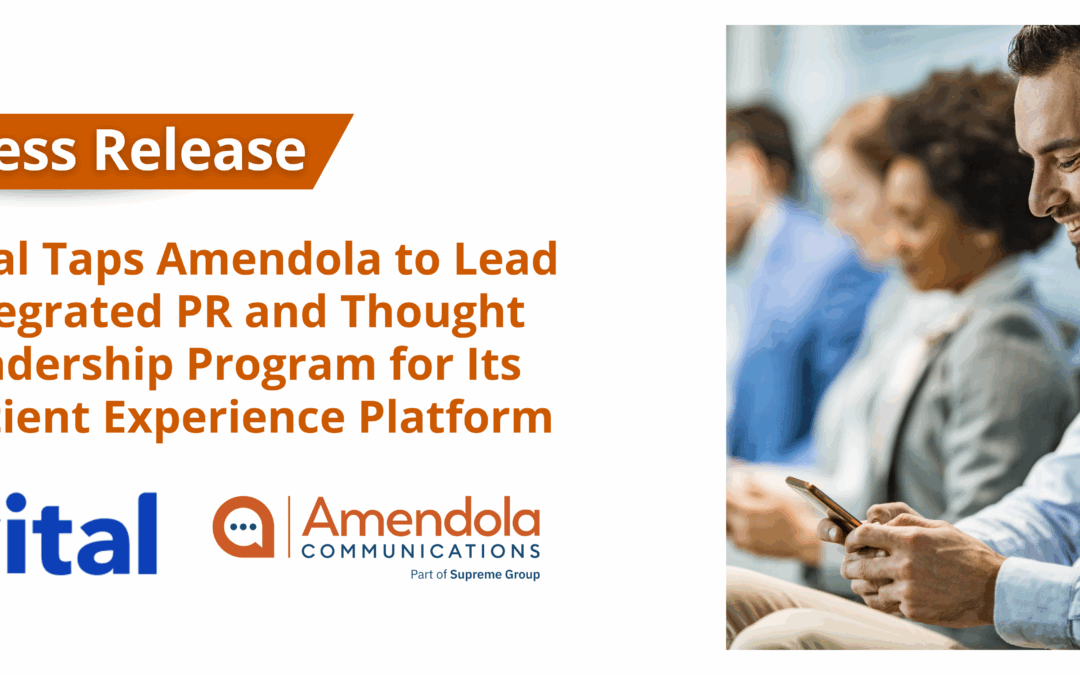
by Administrator | May 6, 2025 | News
SCOTTSDALE, Ariz., May 7, 2025 — Vital, the AI-powered patient experience platform used by leading U.S. health systems, has chosen Amendola Communications, part of Supreme Group, to spearhead an integrated PR and thought leadership program targeting healthcare IT and clinical audiences.
“Amendola came highly recommended by an industry veteran and brings exactly what we need: deep healthcare expertise, senior-level account directors, and strong health tech media relationships,” said Aaron Patzer, founder and CEO of Vital. “We’re excited to spotlight the concrete financial, operational, and experience improvements health systems are achieving with our platform.”
Amendola’s integrated program will support awareness and growth for Vital’s expanding product suite — Vital Emergency, Vital Inpatient, and Vital Care — all designed to simplify and improve the patient journey. The platform sends real-time updates, education, and actionable information to patients and families in their preferred language without requiring logins or app downloads.
“Vital is changing the game by enabling real-time communication in healthcare that mirrors what consumers expect from other industries — from package tracking to travel alerts,” said agency CEO, Jodi Amendola. “It’s a powerful story we’re excited to help tell.”
Amendola will support Vital’s growth through a strategic blend of media outreach, thought leadership, and targeted content development aimed at healthcare decision-makers.
About Vital.io
Vital (Vital.io) is an AI-powered patient experience company on a mission to make the patient journey better—for everyone. Real-time updates, predictive wait times, plain-language explanations of test results, and simplified discharge instructions all help patients feel valued and reassured. Because, the experience matters as much as the medicine. Ranked by KLAS as #1 in patient experience, Vital achieves concrete results: 30–50% fewer LWOBS/AMA, 10–15% higher NPS, stronger HCAHPS scores, reduced ED returns, and 5–7% lower 30-day readmissions. Designed to integrate seamlessly with existing EHR systems, Vital provides a user-friendly interface that engages patients, resulting in 60%+ adoption rates, 5-10x higher than the competition. View our product overview.
Media Contact:
Marcia Rhodes / mrhodes@acmarketingpr.com
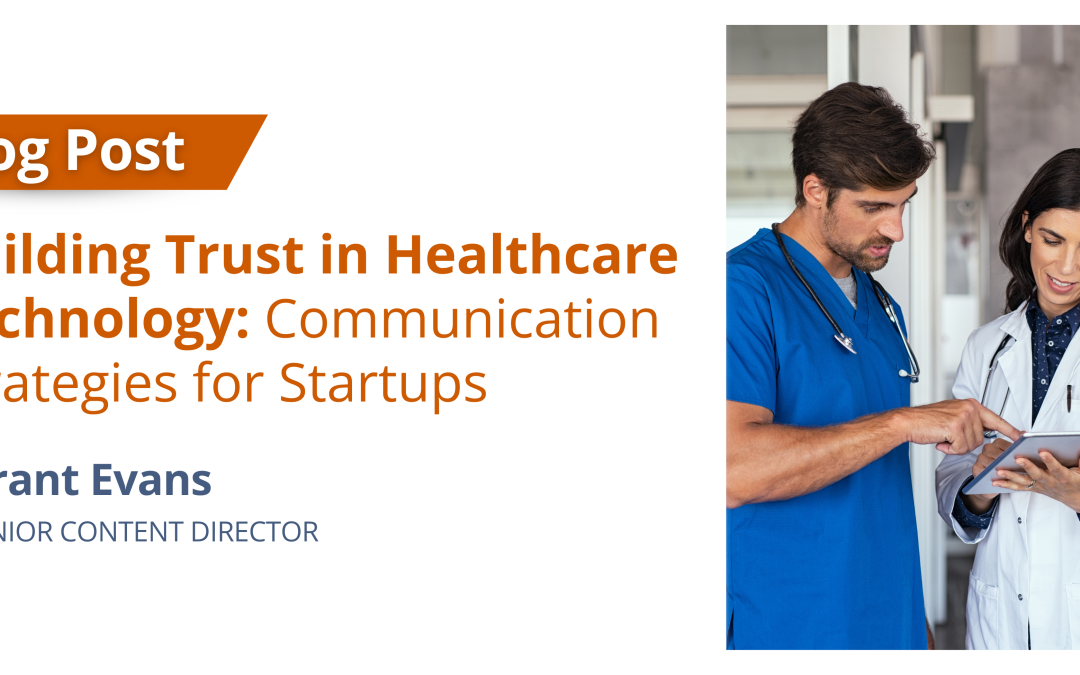
by Grant Evans | Mar 19, 2025 | Blog
In healthcare technology, trust isn’t just a marketing goal—it’s the foundation of success. While established healthcare brands leverage decades of reputation, startups face the unique challenge of building credibility from scratch in a sector where mistakes can have serious consequences.
Leveraging Expertise Strategically
Your team’s credentials and experience are your first trust-building assets. However, many health tech startups underutilize these valuable proof points. Beyond simple bio pages, consider developing thought leadership content that showcases your team’s deep understanding of healthcare challenges and solutions. Regular blog posts, whitepapers, and speaking engagements help position your experts as reliable voices in the field.
Data-Driven Credibility
Original research and survey data are powerful trust-building tools. Consider conducting annual industry surveys that explore healthcare technology trends, challenges, and adoption patterns. This primary research can fuel an integrated content strategy:
- Transform survey insights into comprehensive ebooks and whitepapers
- Create press releases highlighting key findings for media coverage
- Develop social media campaigns featuring data points and infographics
- Gate premium content to capture leads while building authority
- Use data points in media pitches to secure coverage and commentary opportunities
This approach positions your startup as a knowledge leader while generating valuable marketing and PR opportunities. Media particularly value exclusive data, making your startup a go-to source for industry insights.
Establishing Partnerships
Strategic partnerships with established healthcare institutions can significantly accelerate trust-building. Whether it’s pilot programs with hospitals, research collaborations with medical schools, or integration partnerships with established health tech platforms, these relationships signal credibility to your target market.
Many successful health tech startups begin by focusing on a single respected partner, perfecting their solution in a real world environment before expanding. This approach provides valuable case studies and testimonials—essential tools for building broader market trust.
Demonstrating Compliance and Security
In healthcare, compliance isn’t just about checking boxes—it’s about protecting patients. Clear communication about your regulatory compliance status, security measures, and data protection protocols is crucial. Consider creating dedicated security and compliance content hubs that explain complex requirements in accessible terms.
Be transparent about your current stage and future roadmap. If you’re still working toward certain certifications, communicate your progress and commitment to meeting industry standards.
Creating Evidence-Based Content
Healthcare decisions require solid evidence. Develop content that demonstrates both your solution’s effectiveness and your understanding of healthcare’s complexities. This might include:
- Detailed case studies with measurable outcomes
- Research collaborations and clinical validation studies
- Regular analysis of healthcare trends and challenges
- Clear explanations of your technology’s scientific foundation
Building Media Relationships
Focus on building relationships with healthcare technology journalists and influencers before you need coverage. Provide them with genuine insights, exclusive data, and expertise, not just company news. When you do have news to share, these established relationships will help ensure more informed, credible coverage.
Leveraging Agency Expertise
For many health tech startups, partnering with an experienced communications agency can accelerate trust-building efforts. The right agency brings established media relationships, content development expertise, and integrated campaign experience. They can coordinate media and analyst relations while developing compelling content that showcases your expertise.
However, success requires more than just hiring an agency. Designate a dedicated in-house resource to serve as the primary liaison. This person should facilitate content approvals, coordinate subject matter expert interviews, and monitor industry developments that could fuel new content or media opportunities. This partnership approach ensures your agency can execute effectively while maintaining alignment with your company’s goals and expertise.
The Long Game
Trust in healthcare technology isn’t built overnight. A consistent, multi-channel approach focused on expertise, evidence, and transparency will gradually establish your startup as a credible player in the healthcare ecosystem. Remember, in healthcare technology, trust isn’t just about marketing—it’s about demonstrating your commitment to improving patient outcomes and advancing healthcare delivery through validated, data-driven approaches.
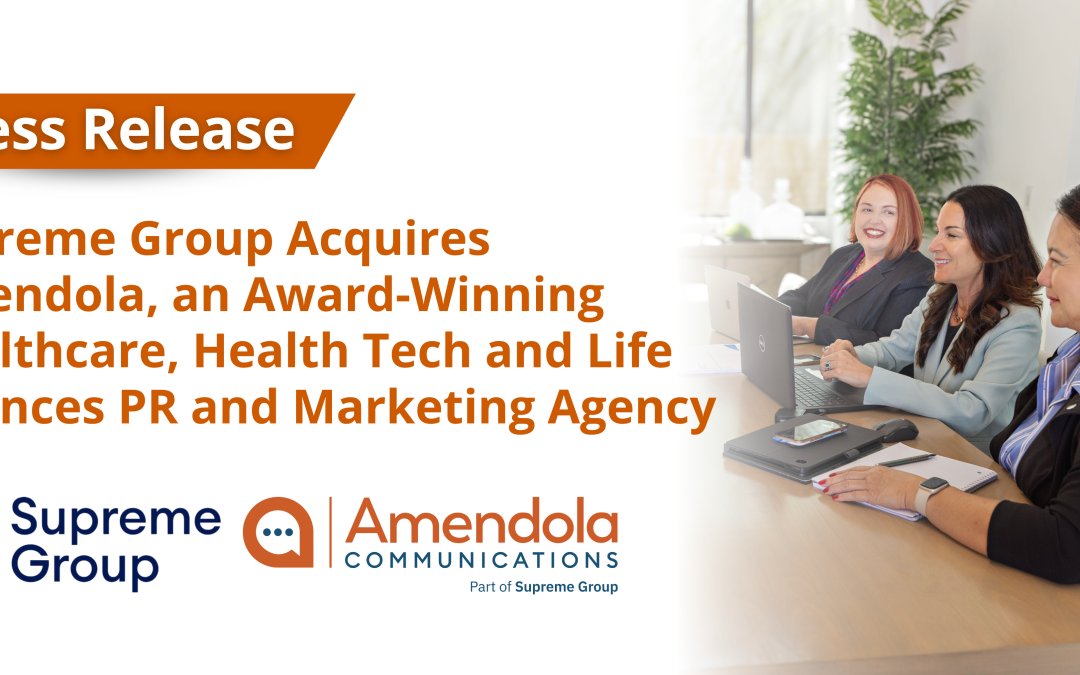
by Administrator | Dec 4, 2024 | News
Fifth acquisition joins growing platform of world-class health-focused businesses
WEST CHESTER, PA AND SCOTTSDALE, AZ, Dec. 4, 2024—Supreme Group today announced its strategic acquisition of Amendola Communications (Amendola), a recognized leader in providing integrated public relations, marketing, and social media services to healthcare, health tech and life sciences companies. Amendola will continue to operate under its brand name as a standalone organization within Supreme Group, with Jodi Amendola continuing to lead the organization as president.
“During the past two decades, we have considered the acquisitions of our client companies among our many successes, because it means you have built something of value that can be even more powerful as part of something bigger,” said Jodi Amendola. “Joining Supreme Group is a founder’s dream, as we will not only retain Amendola’s autonomy to deliver the same strategic approach and services our clients have come to trust, but we will also level up our offerings by tapping into the wealth of expertise of the other Supreme Group companies, including digital marketing, enhanced lead generation, creative design services, and PhD-level clinical expertise. It is the ideal fit for Amendola clients and our team.”
Amendola is the fifth agency to join Supreme’s growing strategic platform dedicated to providing best-in-class marketing and communications services to a broad range of healthcare and life sciences companies. Supreme Group was formed following Trinity Hunt’s majority investment in the digital agency Supreme Optimization in March 2023.
Amendola was founded more than two decades ago by Jodi and Ted Amendola to help promote emerging digital health technologies with a very clearly defined purpose: To improve healthcare for all stakeholders. Over the years, the company has expanded to include healthcare and life sciences more broadly, while continuing to grow as a leading health tech agency. From Fortune 500 companies to startups, Amendola has consistently taken companies from virtual unknowns to household names, and its programs have contributed to successful funding efforts, profitable acquisitions and IPOs. Its senior level “A-team” helps to set the agency apart. The company’s 25 employees serve approximately 50 clients.
“When we learned about Amendola and its strong reputation and footprint, particularly in health tech, we knew the agency would fit in perfectly with the Supreme Group family of companies,” said Tom Donnelly, CEO, Supreme Group. “We’re impressed by Amendola’s entrepreneurial, results-driven focus, and excited to help take the team to the next level with the combined strength of our experienced Supreme Group executive team and the platform’s sister agencies.”
In addition to Amendola, the Supreme Group’s platform includes:
- Supreme Optimization, a full-service life science- and healthcare-focused digital agency (founded by Sheldon Zhai in 2012 to provide best-in-class services including paid advertising, SEO, content marketing, analytics and website development)
- Health+Commerce, an integrated marketing and public relations agency serving medtech, biopharma and digital health companies
- Clarity Quest, a health tech marketing and communications agency
- BioStrata, a UK-based agency offering comprehensive marketing communication services to the life sciences sector
Mike Steindorf, partner at Trinity Hunt, said: “Trinity Hunt is a growth-oriented private equity firm that builds world-class companies within healthcare. With Tom’s leadership as CEO and the supercharged platform of Supreme Optimization, Clarity Quest, BioStrata, Health+Commerce, and now Amendola, we are building something powerful in the life sciences and healthcare marketing and communications services business. We look forward to supporting and growing these companies and adding additional complementary businesses to the platform.”
California Counsel Group and Gabriel & Ashworth served as advisors to Amendola.
Headshots of Jodi Amendola and Tom Donnelly are available here and here.
About Supreme Group
Trinity Hunt-backed Supreme Group is a platform dedicated to providing best-in-class business and commercialization services to a broad range of life science and healthcare companies. Supreme Group’s portfolio companies include Supreme Optimization, a life sciences-focused digital agency; Clarity Quest, a health IT marketing agency; Health+Commerce, an integrated marketing and public relations agency; BioStrata, a UK-based agency offering comprehensive integrated services to the life science sector; and Amendola, an integrated public relations, marketing, and social media agency serving healthcare, health tech and life science companies. For more information visit www.supremegroup.io.
About Trinity Hunt Partners
Trinity Hunt Partners is a growth-oriented private equity firm with over $2 billion of assets under management focused on building leading business, healthcare, and consumer services companies. Trinity Hunt’s mission is to provide the talent and strategic, operational, and financial capabilities needed to build entrepreneurial services companies into market leaders. For more information, visit www.trinityhunt.com.
About Amendola
Amendola, part of Supreme Group, is an award-winning, insights-driven public relations and marketing firm that integrates media relations, social media, content, and lead gen programs to move healthcare, life sciences/pharma and healthcare IT decision-makers to action. The agency represents some of the industry’s best-known brands as well as groundbreaking startups that are disrupting the status quo. Nearly 90% of its client base represents multi-year clients and/or repeat client executives. Amendola’s seasoned team of PR and marketing pros understand the ongoing complexities of the healthcare ecosystem and provide strategic guidance and creative direction to drive positive ROI, boost reputation and increase market share. Making an impact since 2003, Amendola combines traditional and digital media to fuel meaningful and measurable growth. For more information about the industry’s “A-Team,” visit our website and follow us on LinkedIn.
###
Media Contact
Jodi Amendola
Amendola, part of Supreme Group
jamendola@acmarketingpr.com

by Administrator | Dec 2, 2024 | News
Check out these recent interviews with Amendola’s founder Jodi Amendola that delve into what’s trending in healthcare, health tech and life sciences PR and marketing, including hot tips on what it will take to succeed in today’s challenging market.
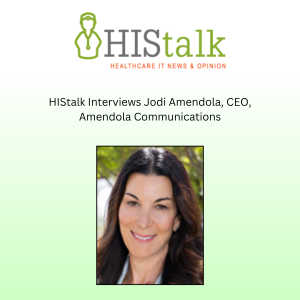 ➡ HISTalk interview with Mr. HISTalk
➡ HISTalk interview with Mr. HISTalk
 ➡ Behind the Mask podcast with Ed Marx
➡ Behind the Mask podcast with Ed Marx
 ➡ What’s My Tagline podcast with Carol Flagg
➡ What’s My Tagline podcast with Carol Flagg
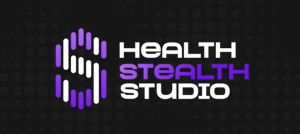 ➡ Digital Health Insights podcast with Frank Cutitta
➡ Digital Health Insights podcast with Frank Cutitta
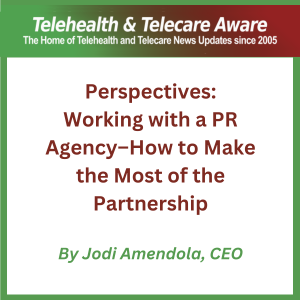 ➡ Perspectives: Working with a PR Agency–How to Make the Most of the Partnership
➡ Perspectives: Working with a PR Agency–How to Make the Most of the Partnership
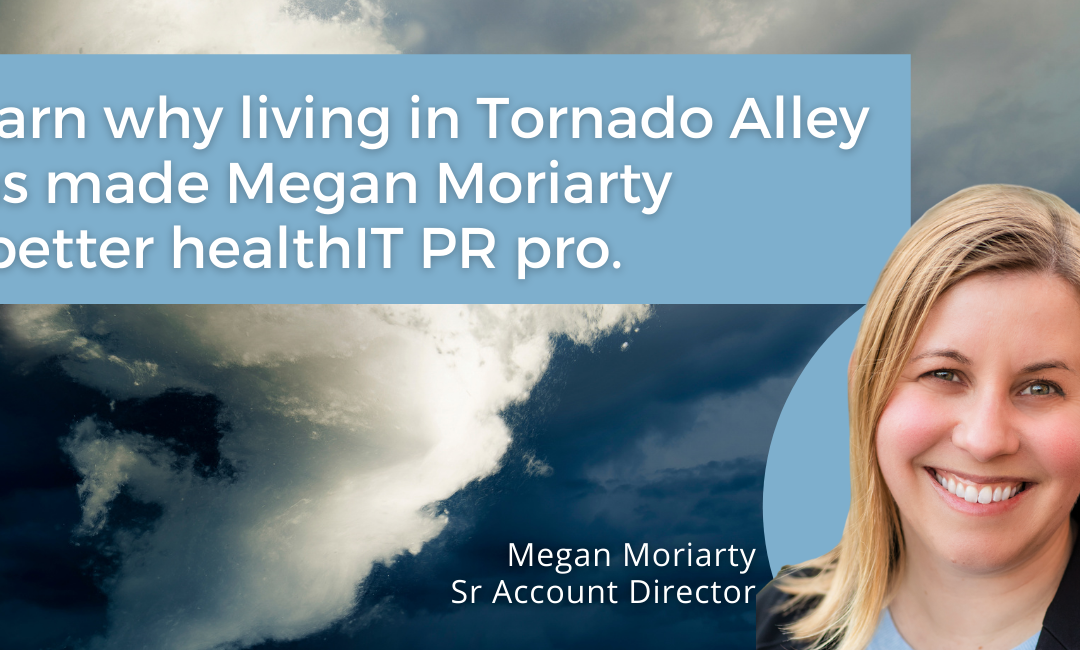
by Megan Moriarty | Jul 21, 2021 | Blog
Most people working in communications are familiar with the idea that storytelling creates the most impactful and memorable messages. Feeling a human connection to a story is what makes it resonate with us, and what makes us care. Working in the healthcare communications field makes it easy to tell great stories because we’ve all had our own healthcare experiences. Healthcare is personal and we can relate to any number of situations because of that.
When pitching/covering/writing about health IT, it’s important to center around the human element. Amendola CEO Jodi Amendola has shared that the best PR is personal, and the human connection is what makes any story relatable. My colleague Margaret Kelly also recently wrote about her perspective on health IT as a patient. Connecting the features of health tech to end users (physicians and other care providers) and to the ultimate benefits to patients makes stories more powerful and demonstrates the value of technology.
In the health IT world, there’s so much innovation and so many new tools, programs and systems that can improve the healthcare system. But the most important stories in health IT are not about the technology but instead about the patients who ultimately benefit from the technology. Patients are the ultimate beneficiary of all the innovation happening in healthcare, from safety, to efficiency, to patient satisfaction and ultimately improved health outcomes.
If, like me, you’ve had a telemedicine appointment this year because of COVID-19, you’ve experienced health tech innovation firsthand. While telehealth was not initially conceived as a method for delivering health care to prevent viral spread during a pandemic, it’s an unexpected use case for an innovation that was originally thought of as a convenience. The rapid adoption of telemedicine during the COVID-19 pandemic has likely changed health care delivery, and telemedicine is likely here to stay in a bigger role moving forward.
I can look at my own career in PR and see real-world examples of how healthcare technology benefitted physicians and patients in unexpected ways. I live in the Kansas, which is right in the heart of “Tornado Alley.” No, I’ve never actually seen a tornado, but the sirens are a familiar part of spring and summer in the Midwest. Tornados are destructive and can be deadly – you may remember the horrific destruction of the EF-5 tornado in Joplin, Missouri in 2011 which killed 161 people and badly damaged the local hospital.
Even though there were reports of X-ray films being blown 70 miles away, patient records were also digitized. When the hospital was closed due to the extensive damage, the community set up temporary facilities to care for patients and the clinicians were able to electronically access medical records for those patients. Prior to the widespread adoption of electronic health records, this would not have been possible.
I was also working in health IT when a devastating tornado ripped through a medical center in Oklahoma in 2013. The roof was torn off and the medical center had to evacuate patients to other locations within the regional health system. Before EHRs, this situation would have left clinicians without access to the health records for the patients in their care. But thanks to the digitization of medical records and a regional health information organization (RHIO) for which my employer remotely hosted the records, patients could be transferred to other nearby facilities and physicians could access patients’ records for treatment.
This second example was actually a cover story in Modern Healthcare that highlighted how technology makes our healthcare system better and benefits communities and patients. It may have been an unintended use case for health information exchanges (HIEs) and remotely hosted records for disaster preparedness, but sometimes unforeseen events help to prove the efficiency and value of certain innovations.
Finding a meaningful way to communicate how innovations benefit people makes health IT messages more memorable. To make your health tech story resonant with audiences, always look for the human connection.





 ➡
➡  ➡
➡  ➡
➡  ➡
➡  ➡
➡ 